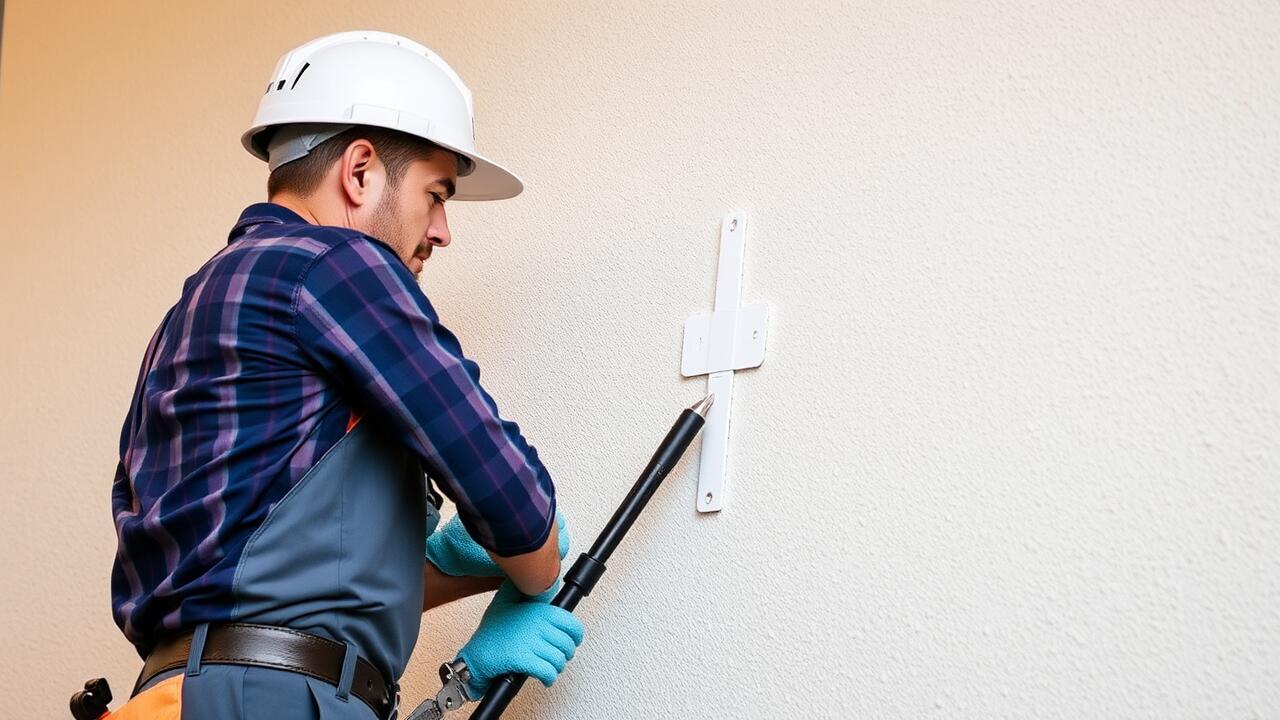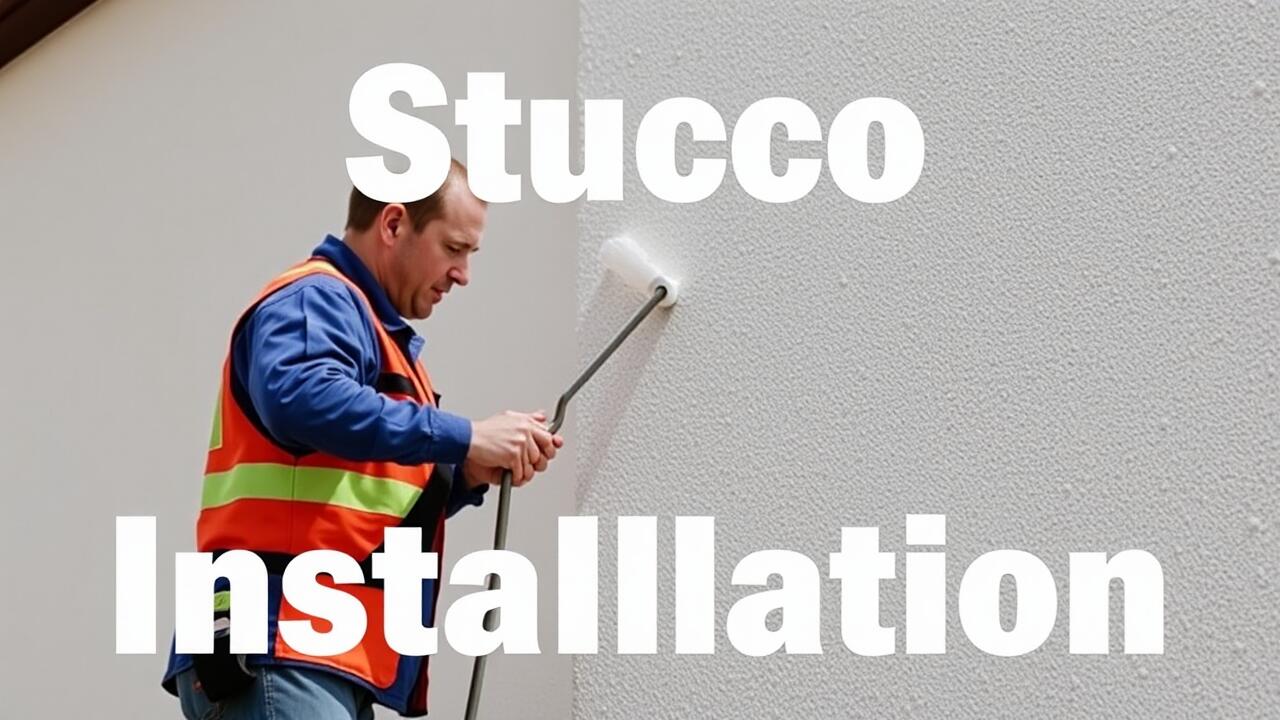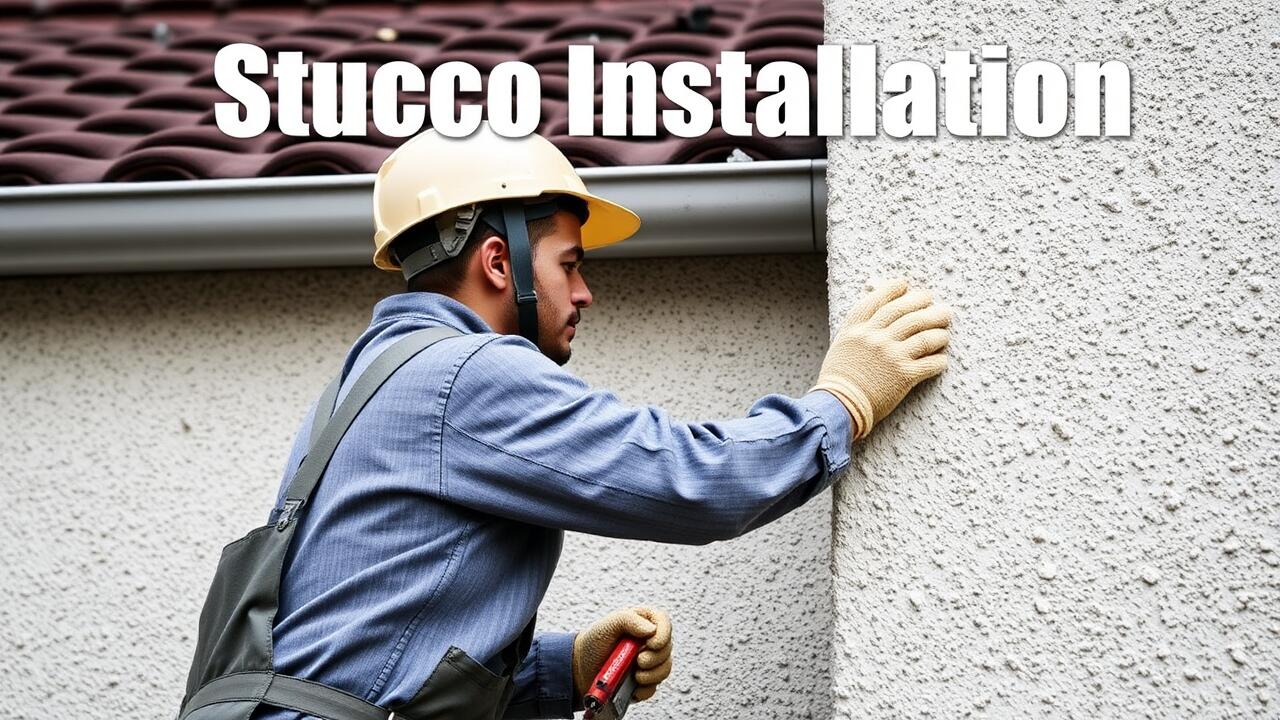
Addressing Water Damage
Water damage is a common issue that can severely impact the integrity of stucco siding. Identifying the sources of moisture is essential for effective remediation. This often involves inspecting gutters, downspouts, and flashing to ensure they are functioning correctly. Areas where water tends to pool or areas with poor drainage must be addressed promptly to prevent further deterioration.
For homeowners considering a repair, it may be wise to consult professionals who specialize in Stucco Installation in Venice, Los Angeles. They can provide guidance on both damage assessment and repair techniques. Addressing any underlying issues can prevent recurrence while ensuring that the aesthetic appeal of the stucco is maintained.
Techniques for Fixing Moisture Issues
Moisture issues in stucco siding often stem from improper installation or damage over time. It's crucial to identify and address any areas where water may be infiltrating the walls. Inspect for cracks, gaps, or any signs of rot. Repairing these issues may involve sealing cracks with an appropriate sealant or applying flashings to redirect water away from vulnerable spots. Maintaining a waterproof barrier is essential to ensure the longevity of the stucco.
In Venice, Los Angeles, professional services for stucco installation provide expertise in addressing these moisture problems. The use of moisture-resistant materials and proper installation techniques plays a significant role in preventing water damage. Regular maintenance can also help catch issues early, ensuring that the stucco remains intact and aesthetically pleasing. Homeowners should consider periodic inspections, especially after heavy rainfall or storms, to ensure their siding is in good condition.
Replacing Damaged Sections
Before replacing damaged sections of stucco, it is essential to assess the extent of the damage. Areas that have been compromised should be marked clearly for removal. Use a flat trowel or a chisel to carefully scrape away loose or broken stucco. Ensure that the underlying surface is solid and free of debris, as any remnants can affect the bonding of the new material. For significant repairs, burlap or wire mesh may need to be applied to provide extra support and stability.
Once the damaged areas are removed, the next step is to replace them with new stucco. Cut the replacement sections to size, taking care to match the thickness of the original stucco for a seamless finish. Mix the stucco according to the manufacturer's instructions, ensuring consistency in texture. If you are considering professional work, look for options such as Stucco Installation in Granada Hills, Los Angeles, where experienced contractors can help achieve the right results. Apply the new stucco using a trowel, feathering the edges to blend it into the surrounding area.
How to Cut and Install New Stucco
When replacing damaged stucco, the first step is to cut the old material carefully. Use a utility knife or a stucco saw to create clean cuts around the affected area. This helps prevent further damage to the surrounding stucco. After cutting, remove the loose stucco, ensuring that the area is clear of debris. It’s essential to wear protective gear during this process to avoid injuries. Once you have readied the surface, it will be easier to apply new stucco smoothly.
After preparing the area, focus on the installation of the new stucco. Measure the cut area accurately to ensure your new stucco fits perfectly. Mix the stucco according to the manufacturer's instructions, achieving the right consistency for application. Apply a bonding agent if required, then use a trowel to spread the mixture evenly over the area. For those interested in a professional job, consider options like Stucco Installation in Venice, Los Angeles, where skilled contractors can help achieve a flawless finish.
Applying New Stucco
Before applying new stucco, ensure that the surface is clean and free of debris. This preparation can enhance adhesion and overall finish. Wetting the existing surface slightly may further improve the bonding capabilities of the new mixture. It is important to mix the stucco according to the manufacturer's instructions for optimal consistency and workability. Spreading the mixture evenly will ensure a smooth application while preventing any visible seams between the new and existing material.
Using a trowel, apply the stucco in a thin, even layer, starting from the bottom and working upwards. Maintain a consistent thickness for a uniform appearance. Allow the first coat to dry before adding additional layers. If undertaking stucco installation in Venice, Los Angeles, consider the local climate, as temperature and humidity levels can influence the curing process. Regularly checking and adjusting based on weather conditions may lead to better results in the long run.
Mixing and Applying the Mixture
Mixing the stucco mixture requires precision to ensure a strong and durable application. Start by combining the dry ingredients such as Portland cement, lime, and sand in the correct ratios. Adding water gradually while stirring will help achieve a workable consistency, similar to thick peanut butter. Be mindful of the temperature and humidity levels, as these factors can affect curing time and finish quality. Allow the mixture to rest for about ten minutes before use to ensure proper hydration and bonding.
When applying the stucco, begin at the bottom and work your way up, using a trowel or a sprayer for an even layer. The technique used can vary according to the desired finish, whether smooth or textured. It is essential to apply the stucco in multiple coats, allowing each layer to set before applying the next. For those considering a project, seeking expert assistance in the area may be beneficial. Stucco Installation in Venice, Los Angeles, is an excellent option for anyone wanting to ensure a high-quality finish with attention to detail.
FAQS
What are the common signs of water damage in stucco siding?
Common signs of water damage include discoloration, cracks, bulging or sagging areas, and the presence of mold or mildew. You may also notice peeling paint or moisture buildup inside your home.
How can I determine if my stucco needs to be replaced or just repaired?
If you find small, localized issues like minor cracks or moisture problems, repairs may suffice. However, extensive damage, such as large cracks, significant water intrusion, or crumbling, may necessitate replacement.
What tools do I need to repair stucco siding?
Essential tools for repairing stucco siding include a trowel, putty knife, hawk, mixing bucket, spray bottle for moisture, and safety gear such as gloves and goggles.
Can I apply new stucco over existing stucco?
Yes, you can apply new stucco over existing stucco, provided the old surface is clean, stable, and free of moisture issues. Ensure proper preparation and bonding agents are used for the best results.
How long does it take for new stucco to dry and cure?
New stucco typically takes about 24 to 48 hours to dry to the touch, but full curing can take several weeks. It's important to keep the stucco moist during the curing process to prevent cracking.



